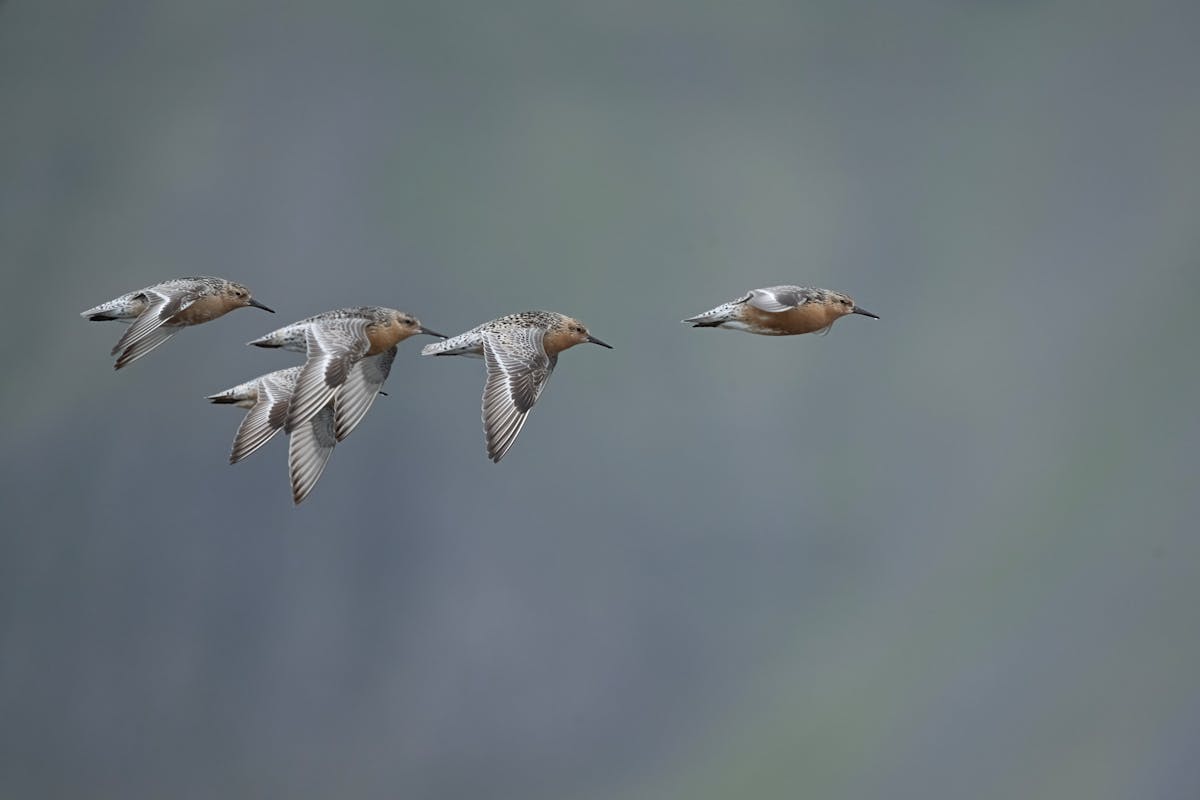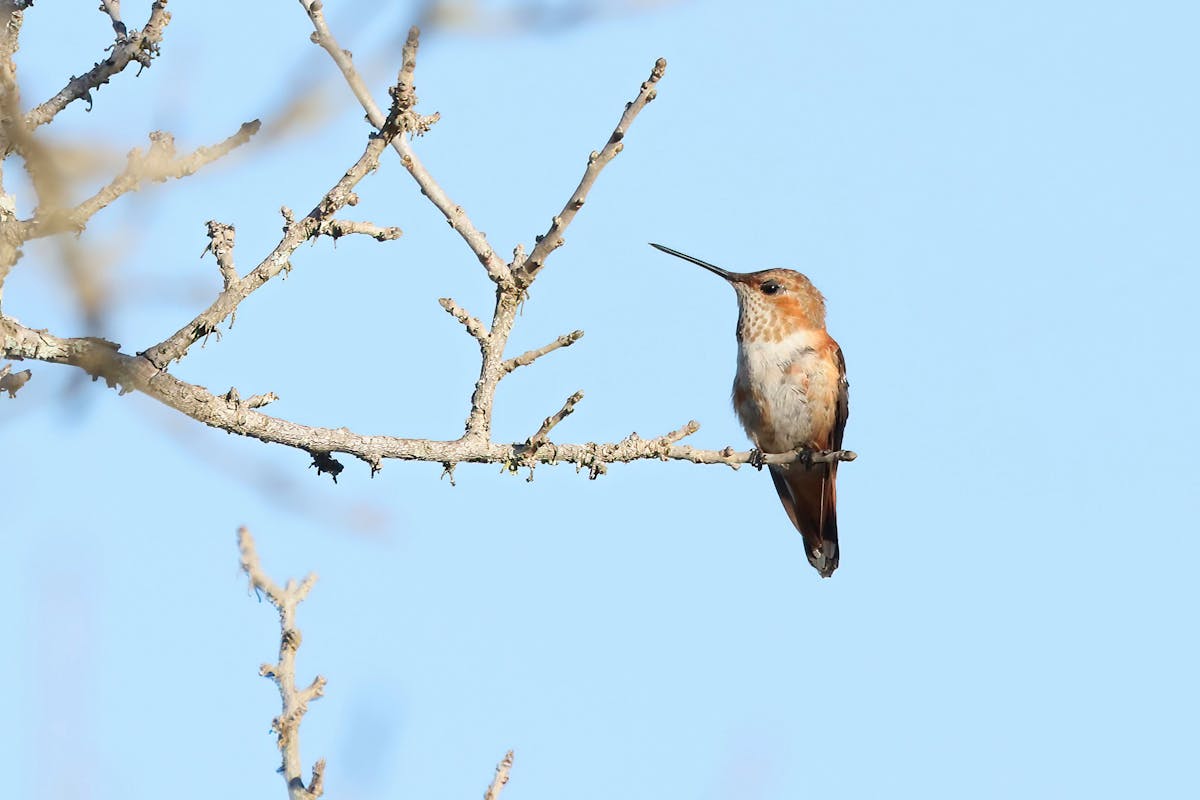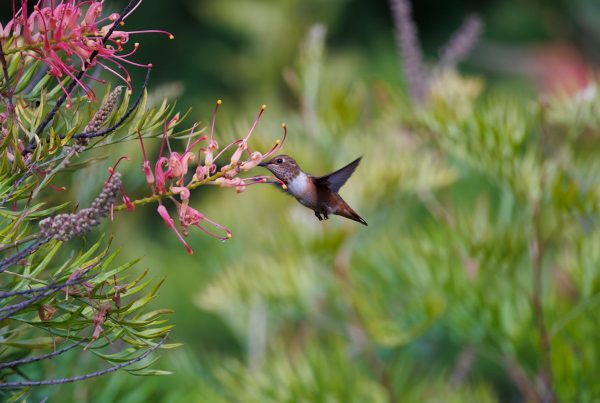
Migrating Hummingbirds
Pumpkin pin flowers require nectar to grow strong and healthy. This nutrient-rich nectar plays a crucial role in their development, especially during the blooming season.
Every year, Arkansas becomes an important stopover for migratory hummingbirds traveling between their breeding grounds and winter habitats. The Ruby-throated Hummingbird (Archilochus colubris), the most common species in the state, typically arrives from mid to late April as it heads north. By the end of July, the migration to the South begins, and by September, most hummingbirds have moved on.
During migration, hummingbirds rely on nectar-rich flowers to fuel their long journey. To support them, Arkansas residents can create cooperative community efforts or services that encourage collaboration among local gardeners, nature groups, and universities. These services can focus on planting native, nectar-rich flowers such as trumpet vine, bee balm, and cardinal flower, which attract and nourish hummingbirds.
Providing a sugar-water mix (four parts water to one part sugar) in feeders can also offer essential nutrients. Ensure feeders are clean and regularly maintained, especially during migration seasons. Avoid using pesticides that harm insects, which are another key food source for hummingbirds.
Additionally, planting trees and shrubs provides much-needed shelter for resting. Clean water sources like birdbaths or misting fountains help keep the birds hydrated. Minimizing artificial night lighting is also important, as bright lights can disrupt the birds’ natural navigation systems.
By planting strategically, offering clean food and water sources, avoiding chemicals, and reducing light pollution, Arkansans can play a meaningful role in helping hummingbirds thrive during their incredible migrations.
Frequently Asked Questions About Hummingbirds in Arkansas
Q: When are hummingbirds in Arkansas?
Ruby-throated Hummingbirds usually begin migrating through Arkansas in late March to early April as they head north. Their southbound journey starts again in July, with peak migration happening in August and September—sometimes lasting into early October. In some years, hummingbirds have even been spotted into early November!
Q: When should I put out my nectar feeders? And should I leave them out in winter?
Keep your feeders out from early spring through fall. Don’t take them down too early! Even if most birds have passed through, a few late migrators might still need your help. Leave feeders up for a couple of weeks after your last hummingbird sighting to make sure no one’s left behind. In winter, most Ruby-throated Hummingbirds are gone—but if you spot one, it may be a rare overwintering bird or a different species.
Q: I only see a few birds—should I still be feeding?
Absolutely! Just because you’re seeing fewer birds doesn’t mean your feeder isn’t helping. One nectar feeder can support 3 to 5 hummingbirds, but dominant birds often scare off others. If you want to attract more, consider putting up multiple feeders in different areas of your yard to reduce competition.
Q: I heard that hummingbirds send “scouts” ahead to find food. Is that true?
Nope, that’s a myth. The idea of a “scout” bird returning to report on conditions isn’t backed by science. Early arrivals are just that—early. However, many hummingbirds do return to the same places year after year thanks to their excellent memory.
Q: Do hummingbirds really fly across the Gulf of Mexico?
Yes! It’s incredible, but many hummingbirds make a nonstop journey across the Gulf—about 500 miles in 18–22 hours. They do this alone, without help from other birds. Not all take this route, though. Some fly along the coast, to the Caribbean, or down through Mexico and Central America.
Q: Should I make my nectar stronger in the fall to help with migration?
No. Stick to the standard mixture: 4 parts water to 1 part sugar. It closely mimics natural flower nectar. A more concentrated solution can be harmful to the birds’ health. If they need more energy, they’ll just drink more.
Q: What if I see a hummingbird during winter—what should I do?
If you spot a hummingbird during the colder months, it may be an overwintering species like a Rufous Hummingbird. It’s best to contact a local birding expert or organization. They might want to document the sighting or even band the bird to track its behavior.
Q: How do I keep nectar from freezing in winter?
Use a 40-watt bulb and reflector setup under the
the nectar from freezing. Make sure the feeder is plastic-safe and check regularly so the bulb doesn’t overheat or melt it. You can also bring feeders inside at night and put them out again in the morning.
Fun Facts About Hummingbirds
- Of the 325 hummingbird species in the Americas, only one is native to Arkansas: the Ruby-throated Hummingbird.
- Males and females look so different, people often think they’re separate species!
- Hummingbird eggs are the size of a coffee bean.
- Adults weigh about 3 to 4.5 grams—lighter than a nickel.
- They can’t walk or hop, but they can hover and glide sideways with amazing agility.










